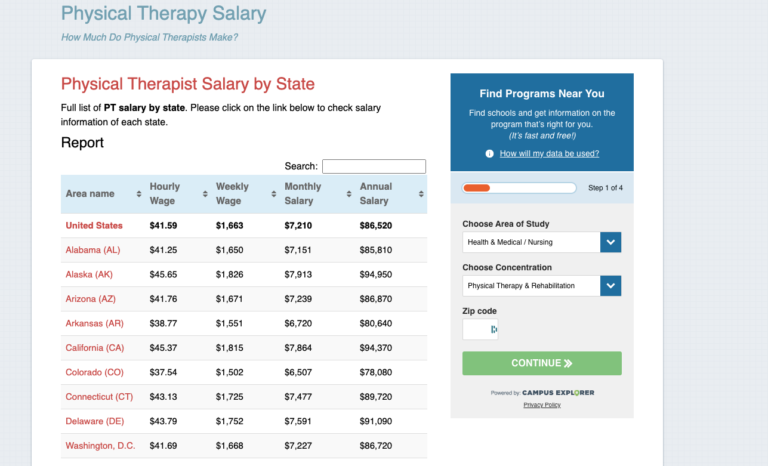Diary of a Student | 10 Tips for Students About to Embark on a Clinical
Congratulations! You’ve made it through one of several steps in PT school. You’ve survived a large portion of your didactic coursework! That’s not an easy thing to accomplish. Now, you’ve made it another step in your curriculum: clinicals. This might be your first clinical, or possibly your last. Regardless, it shouldn’t be any surprise that you are going to learn how to practice as a future PT. After the past 12 weeks of interning here, I can tell you I had a great experience and learned a ton! I’m going to miss this place. I’ve made 10 recommendations just to help prepare you for what to expect on your clinical. Here they are:
- You’re not going to know everything. That’s why you have your CI! Even if it might feel nerve-wracking having them observe you, they’re doing this to give you feedback and help you improve. If you have questions, don’t hesitate to ask them! Initially, I would often review my findings from evals with my CI, and discuss how to explain it to the patient, what exercises to give them for home, and recommended number of visits. This helped gain my confidence at first. During my first clinical, I learned that no student (or even PT) knows everything. That’s what’s great about this profession! There is always room for improvement.
- Make goals each week and strive to improve. This was something I’ve done during my past several weeks. Think of something you want to improve on each week. This could be manual skills, efficiency with documentation, or even educating patients. You’re not going to be perfect in just one week, so take it little by little each week. I tried making 2-3 goals each week, for instance.
- Break your tests and measures down according to position. You don’t want your patient to constantly be flopping around the table. Try to make a list of what you want to test based on whether their sitting, standing, supine, or prone. It makes things flow more smoothly as well. You’ll gain their trust much easier this way.
- Not every patient is going to tolerate every testing position possible. I’ve had several patients who couldn’t tolerate either lying supine or prone. Be prepared for case scenarios like this. In school, we learn about modifications to assess for strength and flexibility. This can be useful to brush up on.
- Exercises aren’t everything you’ve learned from your textbooks. Sure, some will be, but not all of them. Take a look at what some of the other PTs/techs/PTA are doing with their patients. This can help give you more ideas for when you’re treating patients with various impairments. When I first came to this clinic, I didn’t expect to see patients boxing into a boxing bag stand. This was a pretty creative way the clinic worked on core and upper body strength. I’m pretty doubtful something like that was on your lab practical.
- Treat the impairment, not the pathology. During evaluations, it can be really tempting to spend your time just finding out what is going on with a patient. Especially when you’ve spent a large majority of time in class learning about different pathologies and how to assess for them. While, it’s good to still assess for this, just remember that there’s a reason they’re coming into PT. Ask them what their goals are. Maybe they want to walk without having a fall. Maybe they want to be able to turn their head when driving (it’s scary to think about, but yes, you will have patients who drive with limited cervical rotation AROM). Maybe they can’t open jars at home. Focus on taking measurements related to their goals and what PT can do to help them.
- Find something to always educate your patients on. This can be just about anything! Sometimes, I would add exercises to their current HEP, especially once they became easy in the clinic. The clinic also has flyers with educational information for patients. These ranged from “what is shoulder impingement” to “heat vs. ice” to “how to protect my back”. Ask your CI about where these flyers are. Their website also has videos with exercises and useful information. I’ve noticed at least a few of patients were appreciative when I gave them extra information to help them. It makes our profession stand out as educators.
- Review your manual therapy. Clinicals are one of the best places to practice this, since your working with patients who have different impairments. I’ve practiced joint mobilizations, such as movements with mobilizations, shoulder capsule glides, and lumbar rolls, just to name a few. Also, brush up on your soft tissue mobilization skills. Within this clinic, soft tissue mobilizations are very commonly performed.
- Take advantage of downtime to observe with other clinicians. If I didn’t have a patient, I would often sit in with some of the PTs as they performed their evals. One thing I’ve learned during my clinical is that every PT has a different way of performing an eval, yet they all reach the same outcome: getting the patient better. While working with and observing some of the other PTs, I’ve taken certain methods and “buzzwords” they’ve said, and implemented these into my own practice. It helped me become an even stronger intern in the long run.
- Juggling evaluating, documenting, and most importantly, staying engaged with the patient. To be honest, this was difficulty for me to accomplish at first. And to top things off, I had to work on being efficient with everything. It felt like my mind was running in several directions. Again, you’re not going to be perfect on your first week, so take things little by little. At first, I used templates designed from mock evals I made in school. This helped with staying engaged with patients, while quickly and more easily jotting down my information. It also helped as a quick cheat sheet for when I couldn’t remember what special test I wanted to perform next. Once I got into a system for this, I tried entering my information into the computer while assessing the patient. Once you hit this point, try to make it one of your goals to perform a certain part of your eval much quicker. Then, when you look back at each week, you’ll be astounded by just how much you’ve gradually improved.
I hope this helps! I had an awesome experience on my 12 week clinical at Hohman Rehab, and I’m going to miss it. Take advantage of every opportunity to learn something new. For those of you about to start your new clinical, I would also recommend checking out this article. Best of luck!





